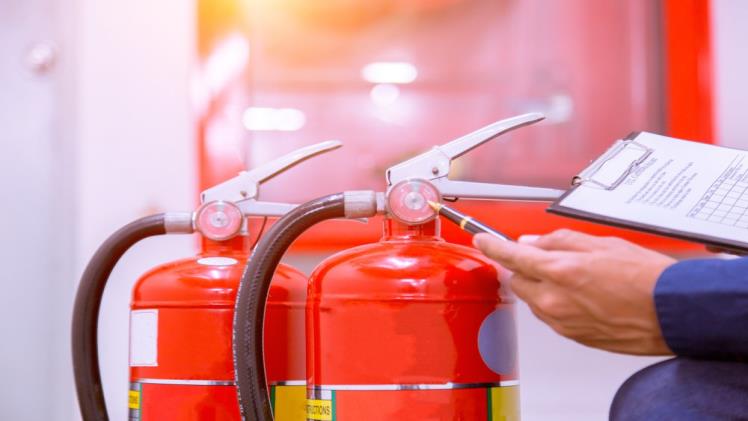Fire safety is a critical aspect of maintaining a safe work environment. Workplace fires can cause significant damage to property, lead to injuries or loss of life, and disrupt business operations. It is essential for employers and employees to be proactive in implementing fire safety measures to prevent accidents and minimize potential risks. Let’s explore important guidelines and practices to ensure fire safety in the workplace.
Conduct a Fire Risk Assessment
fThe first step in implementing effective fire safety measures is to conduct a thorough fire risk assessment. This assessment should identify potential fire hazards, evaluate existing fire safety measures, and determine areas that require improvement. Engage with a fire safety professional or consultant to perform a comprehensive assessment and develop an action plan based on their recommendations.
Implement Fire Prevention Measures
Preventing fires from occurring in the first place is the best approach to fire safety. Ensure that all electrical systems and equipment are regularly inspected and maintained by qualified professionals. Avoid overloading electrical outlets and ensure proper storage and handling of flammable materials. Establish clear protocols for smoking areas, and enforce strict rules regarding the use of open flames and flammable substances.
Install and Maintain Fire Detection Systems
Early detection of fires is crucial for timely evacuation and intervention. Install a reliable fire detection system throughout the workplace, including smoke detectors, heat detectors, and fire alarms. Regularly inspect and test these systems to ensure they are functioning correctly. You keep track of the maintenance intervals by using good fire inspector software. Train employees on how to respond to fire alarms and conduct regular fire drills to familiarize everyone with evacuation procedures.
Provide Fire Safety Training to Employees
Proper training is essential to equip employees with the knowledge and skills to respond effectively in the event of a fire. Conduct regular fire safety training sessions to educate employees on fire prevention, evacuation procedures, and the proper use of fire extinguishers. Train designated employees to operate firefighting equipment and ensure they are aware of the location and types of fire extinguishers available in the workplace.
Establish Evacuation Plans and Exit Routes
Developing and communicating clear evacuation plans and exit routes is crucial for the safe evacuation of employees in case of a fire. Clearly mark emergency exits with illuminated signs and ensure they are easily accessible and unobstructed at all times. Conduct regular drills to practice evacuation procedures and familiarize employees with exit routes. Assign responsibilities to designated employees who will assist with guiding and accounting for everyone during an evacuation.
Maintain Fire Extinguishers and Suppression Systems
Fire extinguishers and suppression systems play a vital role in controlling and extinguishing small fires before they escalate. Ensure that fire extinguishers are strategically placed throughout the workplace and are easily accessible. Regularly inspect and maintain fire extinguishers as per the manufacturer’s recommendations. Consider installing automatic sprinkler systems or other suppression systems, especially in high-risk areas.
Promote Good Housekeeping Practices
A clean and well-maintained workplace can significantly reduce fire hazards. Encourage good housekeeping practices, including regular cleaning and proper storage of materials. Keep work areas free from clutter and ensure that flammable substances are stored in designated areas with appropriate safety precautions. Regularly dispose of waste materials and maintain clear access to emergency exits and firefighting equipment.
Foster a Safety-Conscious Culture
Creating a safety-conscious culture is crucial in ensuring ongoing fire safety in the workplace. Foster an environment where employees feel comfortable reporting potential fire hazards or safety concerns. Encourage employees to actively participate in fire safety initiatives and provide feedback on improving fire prevention measures. Regularly communicate and reinforce fire safety policies, procedures, and expectations to employees.
Regularly Review and Update Fire Safety Measures
Fire safety measures should be reviewed and updated regularly to adapt to changing circumstances and regulations. Conduct periodic audits to assess the effectiveness of existing fire safety measures and identify areas that require improvement. Stay informed about local fire safety codes and regulations to ensure compliance and implement any necessary updates promptly.
Collaborate with Fire Safety Professionals
Seek guidance from fire safety professionals, local fire departments, or occupational health and safety agencies to ensure compliance with regulations and best practices. Engage with experts to conduct fire safety audits, receive training, and seek advice on implementing advanced fire prevention and suppression systems, especially in high-risk environments.
Final Thoughts
Fire safety in the workplace is of utmost importance to protect employees, property, and business continuity. By conducting a fire risk assessment, implementing preventive measures, providing training, establishing evacuation plans, and maintaining firefighting equipment, employers can significantly reduce the risk of workplace fires. Foster a safety-conscious culture, promote good housekeeping practices, and regularly review and update fire safety measures. Collaboration with fire safety professionals and compliance with local regulations are also crucial. By prioritizing fire safety, businesses can create a secure and protected work environment for everyone.





